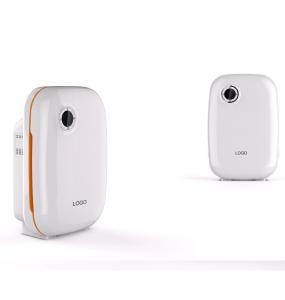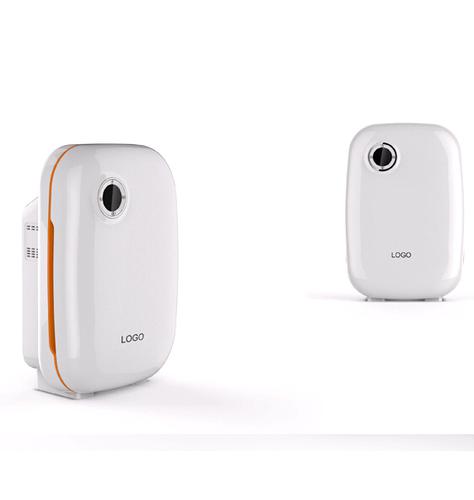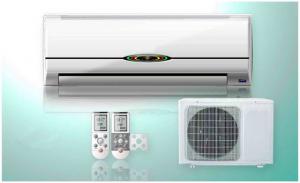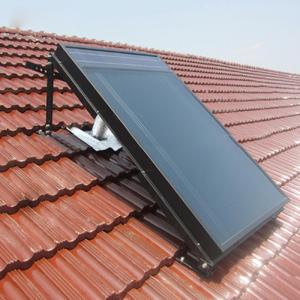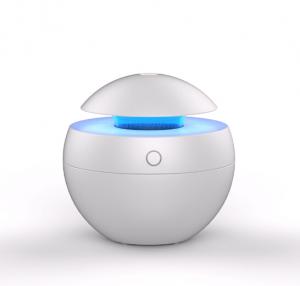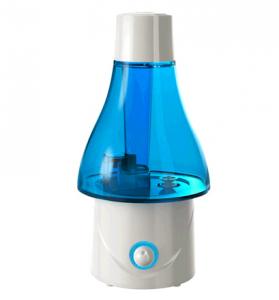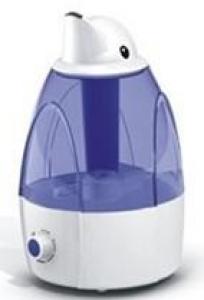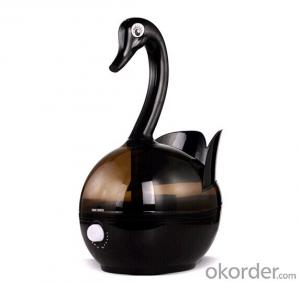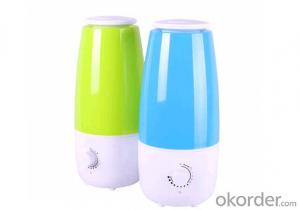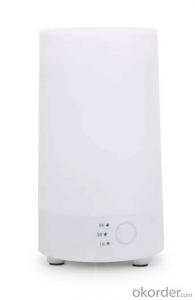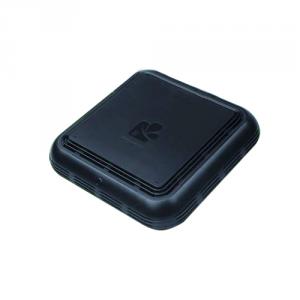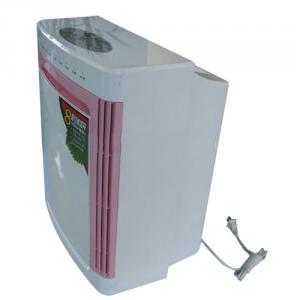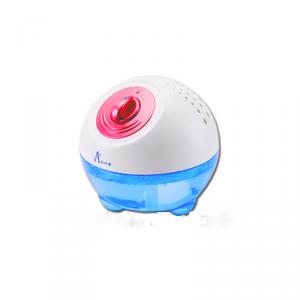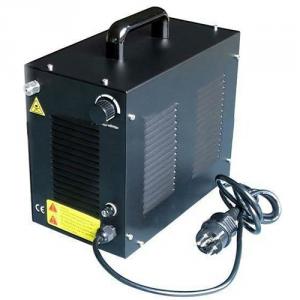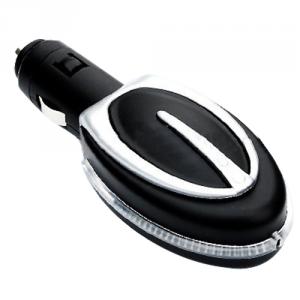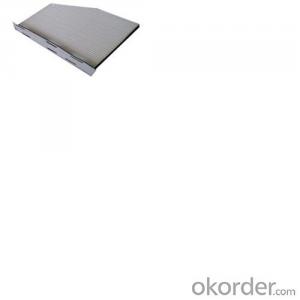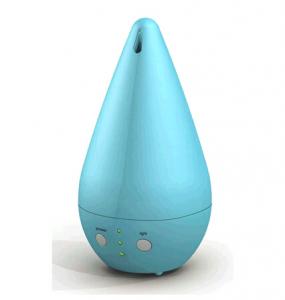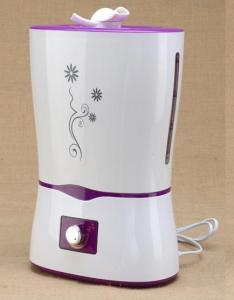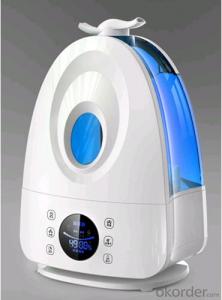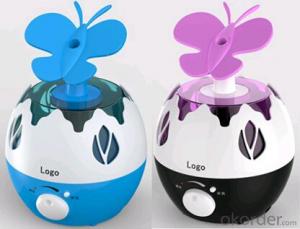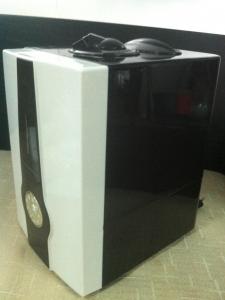Pre-filter and True HEPA filter Air Purifier
- Ref Price:
-

- Loading Port:
- China Main Port
- Payment Terms:
- TT OR LC
- Min Order Qty:
- -
- Supply Capability:
- -
Add to My Favorites
Follow us:
OKorder Service Pledge
Quality Product, Order Online Tracking, Timely Delivery
OKorder Financial Service
Credit Rating, Credit Services, Credit Purchasing
Pre-filter and True HEPA filter Air Purifier
Features:
1. Negative ion concentration 7 million/m3,applicable area25-45m².
2. Indoor Air Purifier, Easy to use. with plug for power socket directly.
3. Decomposition of harmful gases, release negative ions, purifies air around quickly.
4. Pre-filter+True HEPA filter of high efficiency, that captures up to 99.97% of microscopic allergens.
5. Activated Carbon Filter+Cold catalyst filter, to create a pure and fresh environment.
6. Strong effect to kill bacteria, virus, mites, etc.
7. Can check and show the air quality
8. LED light
Technical specifications:
1. With Power plug 2*0.75 1.8m
2. TiO2,Particle sensor
3. Multifunction display:On/Off switch;Fan control;Filter Replacement;Anion Switch;Timer
4. Can put essential oil inside
Packing Details:
Pcs/carton: 4 pcs/CTN
Gross Weight/Carton:21.5kg
Net Weight/Carton: 20kg
Container: 20’: 1120 pcs/ 40’: 2320pcs/40' (HQ):2720 pcs
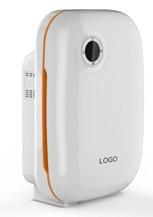
Air cleaners or purifiers can be portable, table-top devices used in individual rooms or larger systems that require installation with an existing HVAC, furnace, or air conditioning system. Air cleaners and purifiers are differentiated by several parameters, including the technology used to filter the air, the size of particle the cleaner is capable of removing, the square-footage covered, maintenance and energy costs, and physical size.
Air cleaners for both home and commerical applications use filters, electricity, and ozone generation to remove particles from the air. High efficiency particulate absorbing (HEPA) air cleaners use filters that can remove 99.97% of airborne particles, including mold spores and smoke. HEPA air purifiers are often used in medical buildings to isolate patients being treated for burns or immunological diseases.
Ionic Air Purifiers
Ionic air purifiers or ionizers use negative ion generators to charge airborne particles so they settle out of the air and on to room surfaces. Some ionizer air cleaners also incorporate an electrostatic system to trap particles on oppositely-charged metal plates.
Ultraviolet (UV) Light Air Cleaners
Ultraviolet (UV) light air cleaners damage the DNA in many airborne biological pathogens such as bacteria and viruses, and destroy dangerous organic compounds. UV air cleaners incorporate the use of an ultraviolet light at a specific wavelength with filtering or electronic systems to purify the air. UV air cleaners are often used in hospitals and prisons.
Ozone Air Cleaners
Ozone air cleaners take advantage of ozone’s extra oxygen atom. The extra atom can readily detach from the ozone molecule and reattach to harmful airborne contaminants, leaving only carbon-dioxide, oxygen, and water. Ozone air cleaners are best used in large industrial applications since this method actually generates an ozone plasma and releases it into the surrounding air.
Electronic or Electrostatic Air Cleaners
Electronic or electrostatic air cleaners charge particles as they pass through the purifier. In a two-stage system, the particles are charged using high-voltage wires. The charged particles are then captured by oppositely-charged metal plates. The plates must be removed periodically for cleaning. Electrostatic air cleaners may be standalone portable units or installed into the ductwork of a furnace or air conditioner.
- Q: Can humidifier prevent static electricity?
- Humidifier humidification, you can reduce the generation of static electricity, but it can not prevent static electricity
- Q: What are the types of humidifiers?
- An immersion electrode type humidifier uses a large area of electrode immersed in water as a terminal and uses water as a heating medium. When the current passes through the water to transfer electric energy, it generates heat, boiling water and producing steam. The utility model is characterized in that the utility model has the advantages of low cost, easy installation and use, but low precision, and needs regular replacement of humidifying barrels for maintenance.
- Q: Why is the humidifier out of breath?
- Humidifier does not spray, do not spray and do not vent, may not be regular cleaning and maintenance. Generally speaking, the cleaning and maintenance period of the humidifier is about one week
- Q: What is the humidifying process of humidifier?
- Produce steam: boil water by electric heating to produce steam.
- Q: What is an ultrasonic humidifier?
- Ultrasonic humidifier uses 2 million times per second high frequency ultrasonic vibration
- Q: How to maintain the humidifier?
- Ultrasonic humidifier is best to use pure water humidification, because many areas of water quality is hard, that is, calcium and magnesium content is high, coupled with the water treatment plant, the use of bleaching powder and so on, some water purification agent
- Q: How to avoid the radiation of humidifier?
- Suitable placement will help avoid the radiation of the humidifier, not too close to the human body, about 2 meters away from the body can be
- Q: What is the working principle of a commercial humidifier?
- The working principle is that the humidifier is used to release the pure substance at the same time of atomizing water
- Q: How to determine whether the oscillation of the humidifier?
- Unable to determine whether it oscillates, can find a semiconductor radio station in no position, full volume (about 30cm or less) near the humidifier, humidifier and then open the power switch, if the received noise interference (noise affected by fog, the fog volume control potentiometer is large, strong oscillation noise; fog hour oscillation weak small noise) that humidifier oscillation. Conversely, the noise is not received, that is, the humidifier is not oscillating
- Q: How to judge whether the humidifier can be good or bad?
- In addition, in order to ensure that the humidifier can work properly and prolong the service life of the energy conversion chip. Clean and remove excess energy film regularly.
